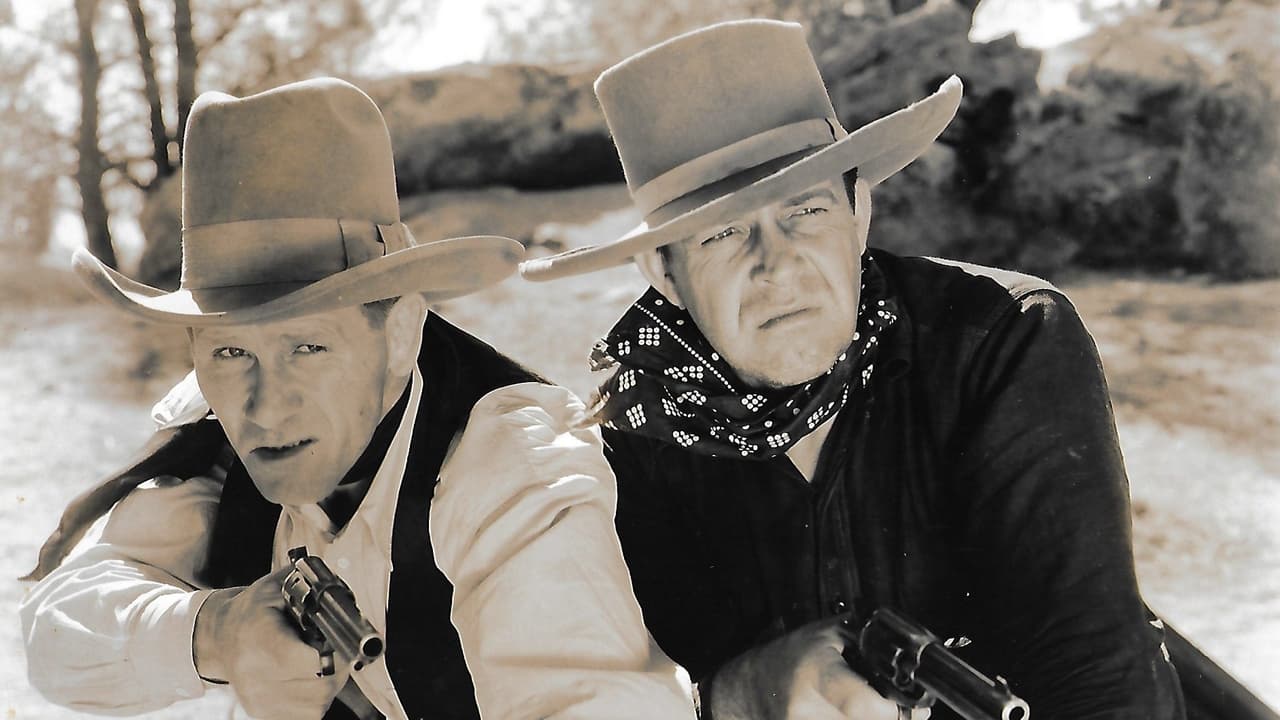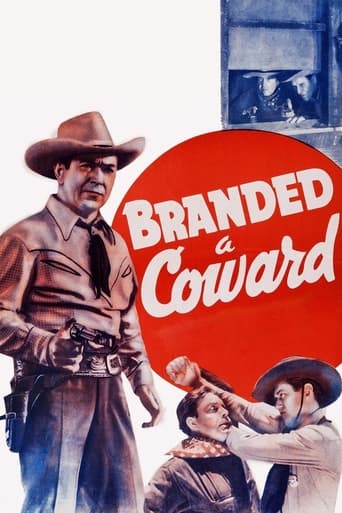



Just perfect...
Boring, over-political, tech fuzed mess
I saw this movie before reading any reviews, and I thought it was very funny. I was very surprised to see the overwhelmingly negative reviews this film received from critics.
View MoreAll that we are seeing on the screen is happening with real people, real action sequences in the background, forcing the eye to watch as if we were there.
View MoreDirector: SAM NEWFIELD. Screenplay: Earle Snell. Story: Richard Martinson. Photography: William Nobles. Film editor: Carl Turner. Production manager: Sam Diege. Sound recording: Erwin Jowett. Producer: A.W. Hackel.Not copyrighted by Supreme Pictures Corporation. U.S. release through William Steiner: July, 1935. 57 minutes. SYNOPSIS: Due to a traumatic experience as a youngster, a prize- winning sharpshooter is afraid of guns.COMMENT: I've often said that even the most confirmed Hollywood hack has the makings of at least one good picture in his lifetime. Witness Edward L. Cahn's Law and Order and William Beaudine's Says O'Reilly to McNab. This picture, on a much lesser scale of course, is Sam Newfield's contribution.The first requirement of any successful picture is a halfway decent script. Snell has woven four or five traditional western themes into this one (the crack shot who is afraid of guns; the murdering outlaws who capture one of two boys and raise him to follow in their footsteps; the heroine's father who has a grudge against the hero because of something his father did in the past; the outlaw who guns down one of the combatants in a street duel from a hiding place and blames the killing on the innocent aggressor; the mysterious outlaw leader who is actually revealed to be the person you least suspect; the nice heroine's trusted dad whose liking for the bottle sometimes gets the better of his discretion) but used them in an unusual way. Instead of emphasizing these clichès, he tends to brush over them, quickly moving from incident to incident and building to a splendid series of climaxes. "Branded a Coward" could justly lay claim to being the first "psychological western".One standard ingredient of the series western that we feel (at least initially) could have been dispensed with is the hero's obligatory sidekick, especially as played here by Syd Saylor. Mr. Saylor is normally a hard act to swallow, but when he puts on his stuttering turn, he's almost impossible. Nonetheless, this "comic" act does give rise to at least one really funny comeback plus one running gag that certainly rates as mildly amusing. And when the unexpected happens, it comes as a bit of a shock.Doubtless realizing that for once in his life, the script provided him a golden opportunity to make something of the "C"-grade western, Newfield has pulled out all the stops. Admittedly, half his efforts don't wholly succeed, but he certainly gets full marks for trying. The chasing-the-runaway-stage-sequence, for instance, is largely camera-captured with running inserts (normally a way-way too expensive proposition for Poverty Row). True, the inserts are some of the bumpiest we've ever encountered, but the very fact that they wobble all over the place actually adds to the excitement. And I love that thrilling moment when the stage shoots through a shallow creek! I've never seen a dramatically picturesque shot like that before in over a thousand westerns.Newfield's new-found prowess is also helped along by a fine group of support players led by legendary stuntman, Yakima Canutt, who performs his famous falling-off-the-lead-horse-and-passing-under- the-coach act right here. More thrills are provided by cult-favorite heavy, Bob Kortman, who (though uncredited) has a sizable part as one of the Cat's lead henchmen. As for the heroine, Billie Seward, she's a real sweetie, and we like Lloyd Ingraham as her surly, boozy dad. Johhny Mack Brown himself is in fine form. In addition to his usual acrobatic leaps into the saddle, he actually has a chance to act in this one — and he brings it off well.
View More"Branded a Coward" has one of the classic B Western story lines - a young boy sees his parents killed by outlaws and one day comes back to avenge the innocent. The minor twist here is that Johnny Hume (Johnny Mack Brown) really didn't plan it that way, but as one thing leads to another, well, you know.Sometimes you have to consider the era when these old time oaters were made. For 1935 this one wasn't all that bad. The leap of faith needed here is how quickly Johnny makes the transition from a 'cowering behind the bar' onlooker to full fledged Western hero when he throws down with the outlaws attacking the stagecoach in the first half. That scene offers the equally classic 'under the stagecoach' maneuver that became a trademark of many films in which Yakima Canutt appeared. Yak portrays gang leader 'Cat' as the story opens, but as things progress, hints are dropped that a new Cat mysteriously appears to take over the gang whenever it's thought the one prior has been compromised.I've only seen Syd Saylor a couple of times before and I don't recall him ever doing the stuttering gimmick. It wears after a while, but it's still a downer when he gets knocked off before the picture ends. All the while he tried getting his words out I kept thinking Porky Pig in those old Warner Brothers cartoons, and had to consider whether Saylor's bit had anything to do to inspire that character.Well you had to wonder if the finale wasn't just a bit too contrived. With the appearance of Johnny's older brother Billy, who also witnessed the death of their parents, an explanation of how he became the new 'Cat' would have been in order. Instead, you just had to take the twist ending on faith that the good brother would come out on top. But Johnny getting the girl (Billie Seward) at the end of the story - that was just par for the course.
View MoreJohnny Mack Brown is the one that is Branded A Coward in this B western produced by a Poverty Row studio called Supreme Pictures. It's not really his fault, he sustained a great emotional trauma as a child, seeing his family massacred by an outlaw only known as 'The Cat'. When he grew up he became a trick shot artist, but when it comes to gunplay with targets that shoot back, Brown can't forget.But when he and sidekick Syd Saylor spot a stagecoach holdup they take a hand in and save the gold shipment and Billie Seward. A grateful town makes him their marshal which Brown decides to accept after he hears that it was the Cat's gang that did the robbery and is operating in that area.This is one unusual B western in that it breaks one parameter of a B western which I will not tell and it has a surprise ending as to who the identity of the mysterious Cat is. I'd check this Johnny Mack Brown western out.
View MoreJohnny Mack Brown made some of the best and fastest westerns for Universal during the 1940s. Here, in one of his 'Supreme Pictures', the story is a little off beat, in that although playing the crack shot rodeo rider Johnny Hume, in an early bar hold up sequence, he hides behind the bar as a shivering, frozen wide-eyed coward, unable to use the gun shaking in his hand.The reason for this is because twenty years earlier, his mother and father, who were driving their covered wagon through unknown territory with him and his older brother, were suddenly ambushed and killed by an outlaw gang. His visual flashback to this scene turns him 'yellow' in the presence of real danger. Hence to everyone he's a coward.This covered wagon ambush, with every one in the family getting killed (except for the hero) was used several times, not only in the remake "Fast on the Draw" (1950), but also in the totally botched "The Rawhide Terror" (1934), "Cavalcade of the West" (1936) and I'm sure in a few others. Of course, the other brother really doesn't die but grows up to be the new leader of the enemy gang! (Sorry for the spoiler!) Guess who has to kill him at the end? You don't see a cowardly hero again until "Sugarfoot" (1958-1959) on TV. But Johnny, although he then skips town with his side kick, Oscar (the sometimes tedious Syd Saylor), suddenly is magically transformed having no trouble at all with two six guns ablazin' knocking off some 'henchmen' and rescuing 'Ethel' (a name forever associated with Vivian Vance, if it wasn't a bad enough unglamorous name already) from an attempted stage robbery, and capturing the stage coach single handed. Back in the town of Lawless, he reluctantly agrees to become sheriff, because we now realize he has a score to settle with "The Cat."As noted by others, it was unusual to see the sidekick getting killed. Then we had the low melodramatic trick of never seeing the face of the boss villain, in this case "The Cat," but only his shadow. And in another unusual twist, Johnny kisses the girl in the middle of the picture, not just at the end. In much of the movie we have more dialog by different characters than we would get, say in a John Wayne 'Lone Star,' but this tends to slow the movie down. When I was around seven years old, Johnny Mack Brown was my favorite cowboy. Inexplicably, this movie doesn't tell me why. We do see his athleticism, because we can see that he actually is the one leaping up on his horse three times. The Mighty Yak, Yakima Canutt, does his amazing, great, slide under the stage coach and then climb up the back of it trick, and he also does a tension building drop off a cliff into a river.But really that's about it. Billie Seward is undistinguished. Syd Saylor's stuttering act gets a little grating. He has a much broader role, as a publicist / acrobat in the Clyde Beatty serial "The Lost Jungle" (1934), although the feature version is better than the serial. He also does okay as Tex Ritter's sidekick in westerns like "Arizona Days" (1937) and "Headin' for the Rio Grande" (1936). He appeared, mostly uncredited, in over 400 movies and TV shows.Despite the unusual elements, it moves a little too slowly. I give it a four.
View More